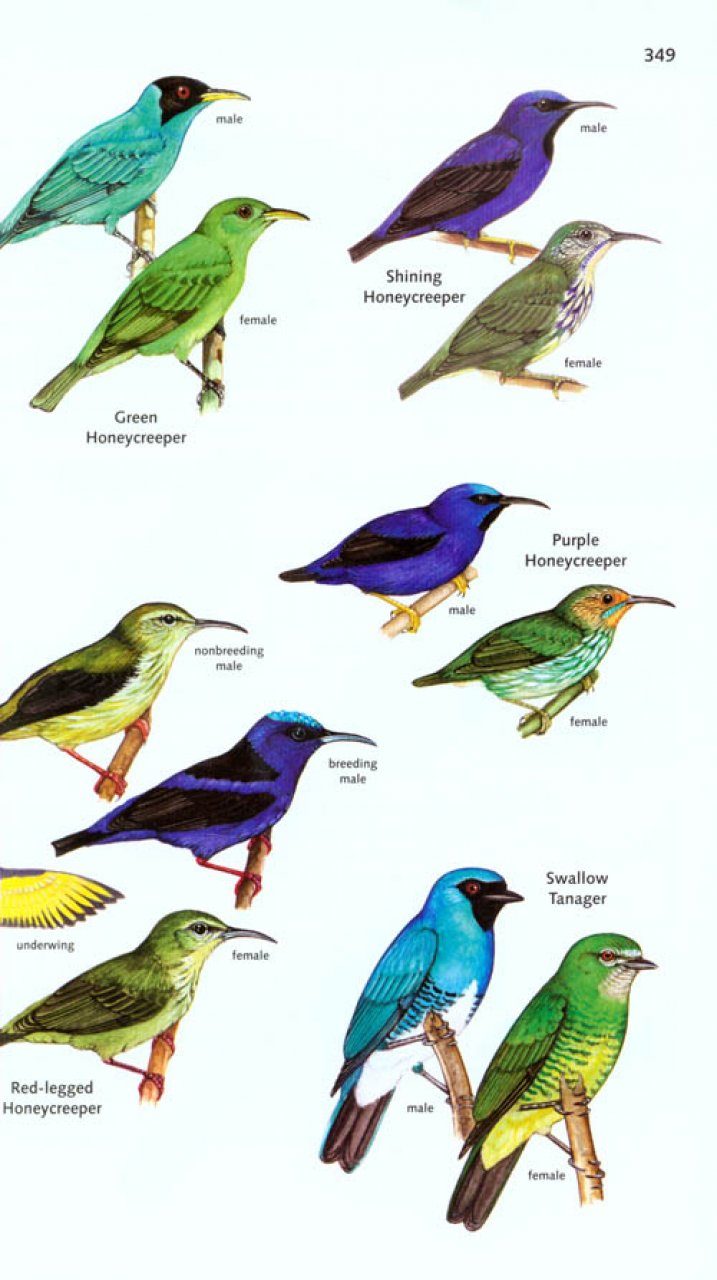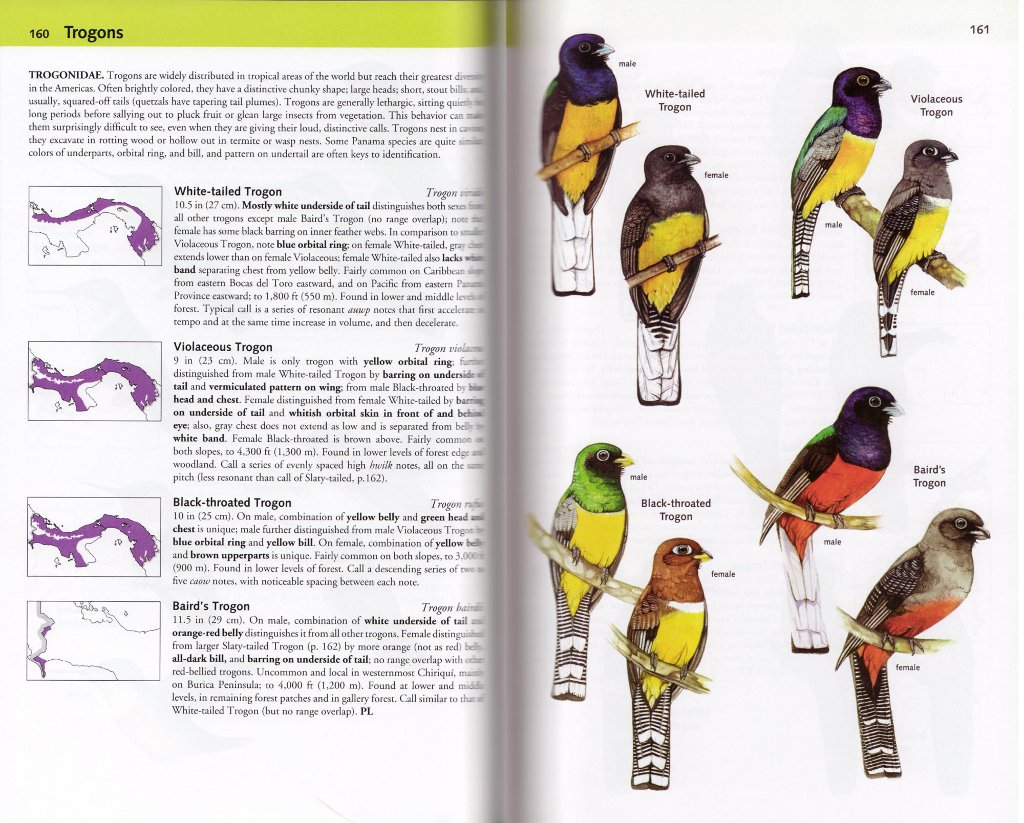Panama is a birdwatcher’s paradise with over 970 bird species. This diverse range makes it a hotspot for bird enthusiasts.
Birds of Panama Field Guide is a valuable resource for anyone keen on exploring this rich avian diversity. Whether you are an experienced birder or a novice, this guide will help you identify various species, understand their habitats, and enjoy your birdwatching experience more deeply.
Panama’s unique geography, with its mix of tropical rainforests, wetlands, and coastal areas, provides a perfect environment for birds to thrive. With so many species to discover, a field guide is essential for navigating this vibrant birdlife. Dive into the fascinating world of Panama’s birds and let this guide be your trusted companion on your birdwatching adventures.
Introduction To Panama’s Birds
Panama is a bird lover’s paradise. With over 1,000 bird species, this country offers endless opportunities for birdwatching. The Birds of Panama Field Guide helps you identify and learn about these species. Let’s dive into the fascinating world of Panama’s birds.
Geographic Diversity
Panama’s geography is diverse. It has mountains, rainforests, and coastlines. Each region supports different bird species. You can find toucans in the forests. On the coasts, you might see pelicans and gulls. The highlands host unique species like the Resplendent Quetzal. This diversity makes Panama a top birdwatching destination.
Climate And Ecosystem
The climate in Panama is tropical. It has a wet season and a dry season. These seasons affect bird behavior. During the wet season, many birds breed. The ecosystem also plays a role. Rainforests offer food and shelter. Coastal areas provide nesting sites. Understanding these factors helps in birdwatching. It makes spotting different species easier.

Credit: www.nhbs.com
Top Birdwatching Spots
Panama is a paradise for birdwatchers. Its diverse ecosystems host over 970 bird species. Some spots offer an unforgettable birdwatching experience. Let’s explore the best places to see birds in Panama.
Soberania National Park
Soberania National Park is a top spot for birdwatching. Located near Panama City, it is easily accessible. The park spans over 55,000 acres of tropical rainforest. You can spot many bird species here. The Pipeline Road is popular among birdwatchers. It stretches for 17.5 kilometers through the park. You might see species like the Harpy Eagle, Blue Cotinga, and Great Jacamar. The park’s trails are well-marked. Guided tours are also available. Early mornings are the best time to visit. Birds are most active then.
Metropolitan Natural Park
Metropolitan Natural Park is another excellent birdwatching spot. It is the only wildlife refuge within Panama City. The park covers 265 hectares of forest. Over 250 bird species live here. Some common sightings include the Yellow-headed Caracara and the Red-crowned Woodpecker. The park has several trails. These trails offer great birdwatching opportunities. Cerro Cedro Trail is a favorite among birdwatchers. It leads to a viewpoint with stunning city and forest views. Visits during early mornings yield the best birdwatching results. Birds are more active and easier to spot then.
Common Bird Species
Bird lovers visiting Panama will find a treasure trove of avian species. The country’s diverse habitats support a wide range of birds. Among these, some species are more commonly seen and easier to identify. This section will introduce you to some of these common bird species. They are a delight for both new bird watchers and seasoned ornithologists.
Toucans And Aracaris
Toucans and Aracaris are among the most iconic birds in Panama. Their large, colorful bills make them easy to spot. The Keel-billed Toucan is a popular species. It has a bright, rainbow-colored bill. Aracaris, like the Collared Aracari, are smaller but equally striking. They have a black cap and a bold, red belly band. These birds often travel in small flocks. They are usually seen in the early morning or late afternoon.
Hummingbirds
Hummingbirds are another common sight in Panama. These tiny, fast-flying birds are known for their iridescent feathers. The Violet-crowned Woodnymph is a standout species. It has a shimmering green body and a violet crown. The Rufous-tailed Hummingbird is also easy to recognize. It has a bright red tail and a green body. Hummingbirds are often found near flowers. They feed on nectar and play a key role in pollination.

Credit: www.birderslibrary.com
Rare And Endemic Birds
Panama is a paradise for bird watchers. The country hosts some of the most unique avian species in the world. Rare and endemic birds are the highlights of this region. Bird enthusiasts travel from far and wide to catch a glimpse of these majestic creatures.
Harpy Eagle
The Harpy Eagle is one of the most powerful birds in the world. This bird has massive claws that can grasp prey with immense force. Its wingspan can reach up to seven feet. The Harpy Eagle thrives in the dense rainforests of Panama. Spotting this bird is a rare and thrilling experience. It symbolizes strength and beauty in the avian world.
Azure-rumped Tanager
The Azure-rumped Tanager is a colorful gem. Its bright blue feathers are a sight to behold. This bird is native to Central America. Panama provides a perfect habitat for this rare species. The Azure-rumped Tanager prefers forest edges and open areas. Its vibrant colors and rarity make it a sought-after bird for many bird watchers.
Birdwatching Tips
Discover the diverse avian species of Panama with the Birds of Panama Field Guide. This guide offers detailed descriptions, helping birdwatchers identify and appreciate the rich birdlife in this tropical paradise. Enhance your birdwatching experience by learning the unique characteristics of Panama’s birds.
Birdwatching Tips Panama is a birdwatcher’s paradise, offering stunning variety and vibrant experiences. To help you make the most of your birdwatching adventure, here are some practical tips. Whether you’re a novice or an experienced birder, these insights will elevate your birdwatching game.Best Time Of Year
The best time to watch birds in Panama is during the dry season, from mid-December to April. During this period, birds are more active and visible. Migratory birds also flock to Panama during these months, increasing your chances of spotting rare species. Early mornings and late afternoons are ideal for birdwatching. The birds are more active and the light is perfect for photography. Take advantage of these golden hours to enhance your experience.Essential Gear
Having the right gear is crucial for a successful birdwatching trip. A good pair of binoculars is a must. They help you see distant birds clearly. Choose binoculars with at least 8x magnification for the best results. A field guide specific to Panama’s birds is incredibly helpful. It aids in identifying species and understanding their behaviors. The “Birds of Panama Field Guide” is an excellent choice. Wear comfortable clothing that blends with the environment. Light, breathable fabrics keep you cool, and neutral colors prevent startling the birds. Don’t forget a hat and sunscreen for protection against the sun. A notebook and pen are useful for jotting down observations. Recording details like location, time, and bird species can enhance your learning and tracking. Finally, pack a small backpack with water, snacks, and a first aid kit. These essentials ensure you stay hydrated, energized, and safe during your birdwatching adventure. Birdwatching in Panama is a rewarding experience. With these tips, you’re well-equipped to enjoy and appreciate the diverse avian life this beautiful country offers. Happy birdwatching!Conservation Efforts
Panama’s diverse bird population is a treasure trove for bird watchers. Conservation efforts play a crucial role in preserving this rich avian biodiversity. These efforts focus on protecting habitats, supporting local communities, and educating the public about the importance of birds.
Protected Areas
Panama has established numerous protected areas to safeguard bird habitats. These areas include national parks, wildlife refuges, and nature reserves. Some well-known protected areas are Soberanía National Park and Coiba National Park. These parks offer safe havens for many bird species.
In these protected areas, hunting and logging are strictly regulated. This helps maintain the natural environment. Birds can nest and feed without disturbance. These efforts help in preserving the natural balance.
Local Organizations
Local organizations play a vital role in bird conservation. They work with communities to promote sustainable practices. One such organization is the Panama Audubon Society. They conduct bird surveys and organize bird-watching events. These activities raise awareness about bird conservation.
Another important group is the Fundación Avifauna Eugene Eisenmann. They focus on research and education. They teach locals about the importance of birds and their habitats. These organizations help bridge the gap between conservation and community needs.
Photography Techniques
Capturing the vibrant birds of Panama requires specific photography techniques. This guide will help you take stunning photos of these beautiful creatures.
Choosing The Right Equipment
Having the right equipment is essential. Start with a good camera body. A DSLR or mirrorless camera works best. They provide better image quality and control. Next, invest in a long lens. A 300mm or 400mm lens helps you get close shots without disturbing the birds. Consider a tripod. It reduces camera shake and helps with stability. Lightweight tripods are easier to carry around in the field.
Best Practices
Be patient. Birds move quickly. Wait quietly and observe their behavior. Use the burst mode on your camera. This setting captures multiple shots quickly. You have better chances of getting the perfect shot. Pay attention to the background. A clear, uncluttered background makes the bird stand out. Adjust the camera settings. Use a fast shutter speed to freeze motion. Set a low ISO to reduce noise in your images.
Practice ethical photography. Respect the birds and their habitat. Do not disturb them for a photo. Stay on marked paths and maintain a safe distance. This ensures the well-being of the birds and their environment.

Credit: www.amazon.com
Resources For Bird Enthusiasts
Panama is a birdwatcher’s paradise, boasting over 970 bird species. Whether you are a seasoned ornithologist or a curious novice, there are plenty of resources available to enhance your birdwatching experience. From field guides to apps, and organized tours, you can explore the diverse avian life that Panama has to offer.
Field Guides And Apps
Field guides are essential for identifying birds. The “Birds of Panama Field Guide” is a comprehensive resource. It features detailed descriptions, illustrations, and information on bird habitats and behaviors.
Apps can also be incredibly useful. Apps like Merlin Bird ID offer quick identification tools. They include bird calls, pictures, and sightings maps. These digital tools complement traditional field guides and make birdwatching more interactive.
Birdwatching Tours
Birdwatching tours are a great way to spot rare species. Guided tours provide expert knowledge and insider tips. Experienced guides lead these tours, ensuring you see the best of Panama’s birdlife.
Tours often include visits to national parks and reserves. They offer opportunities to see birds in their natural habitats. Some tours cater to specific interests, such as photography or conservation.
Frequently Asked Questions
What Birds Are Common In Panama?
Panama hosts a diverse range of bird species, including the Resplendent Quetzal, Harpy Eagle, and Keel-billed Toucan. Birdwatchers can enjoy spotting various hummingbirds, tanagers, and warblers as well.
When Is The Best Time For Birdwatching In Panama?
The best time for birdwatching in Panama is during the dry season, from December to April. During this period, birds are more active and easier to spot, making it ideal for enthusiasts.
Are There Birdwatching Tours In Panama?
Yes, Panama offers numerous birdwatching tours guided by experienced ornithologists. These tours provide opportunities to explore diverse habitats and learn about the country’s rich avian biodiversity.
What Equipment Is Needed For Birdwatching In Panama?
Essential birdwatching equipment includes binoculars, a field guide, and a notebook. Comfortable clothing, a hat, sunscreen, and insect repellent are also recommended for a pleasant experience.
Conclusion
Birds of Panama offer a unique experience for birdwatchers. This guide helps identify various species. Explore diverse habitats and witness amazing birdlife. Equip yourself with this field guide to enhance your adventure. Birdwatching in Panama becomes more enjoyable and informative.
Happy birding!
